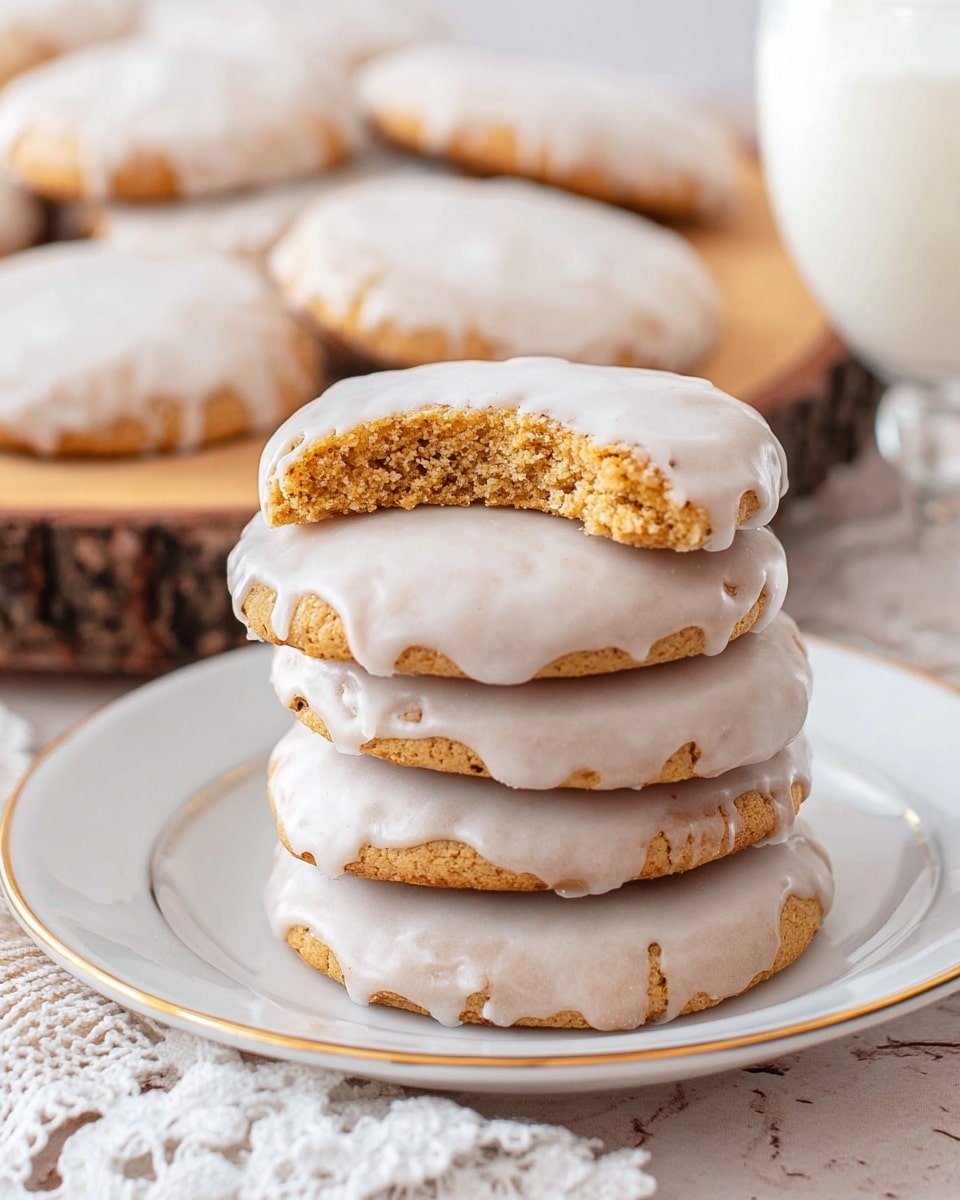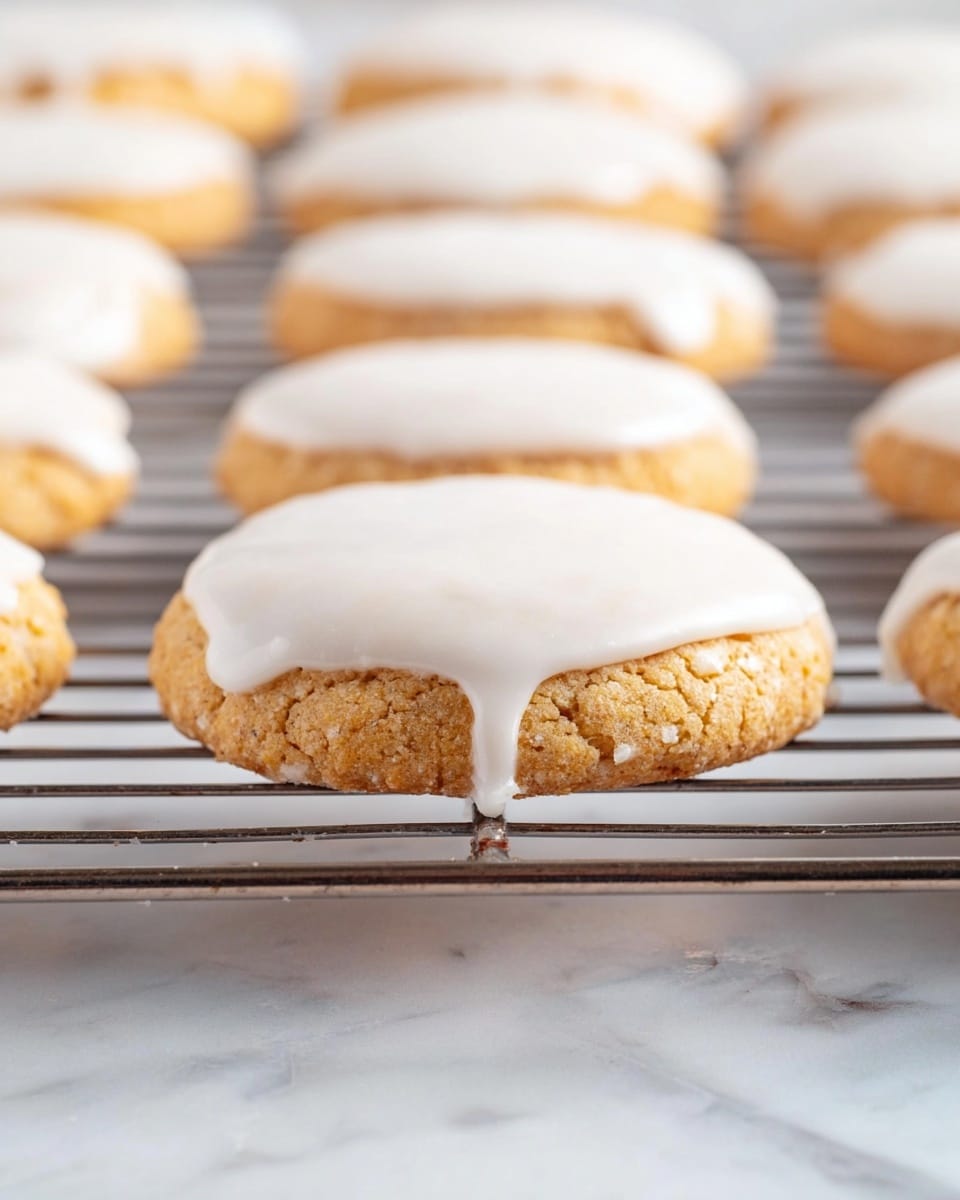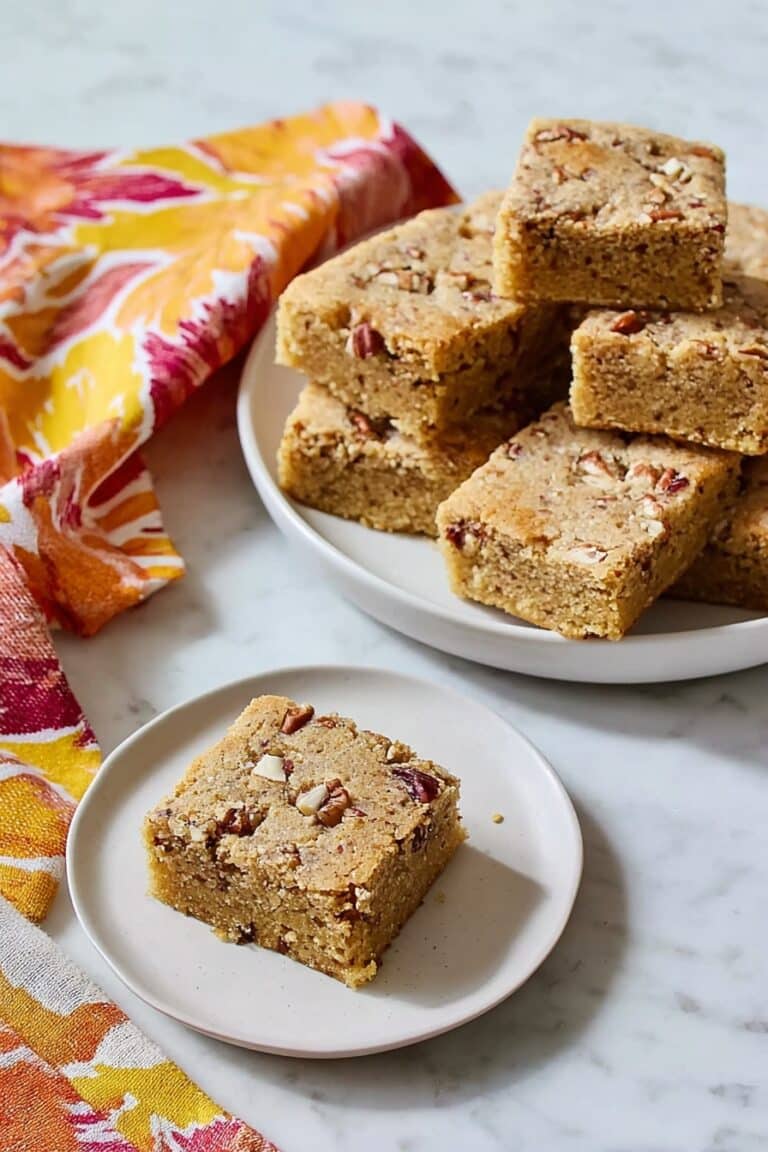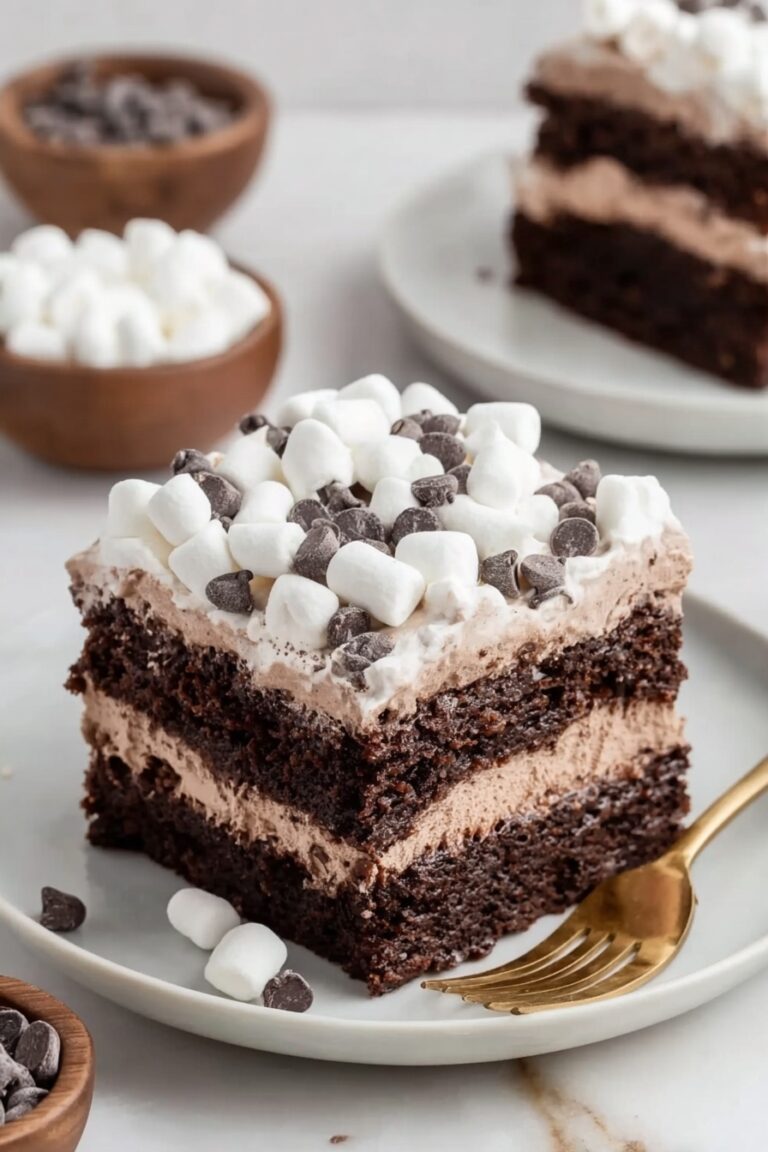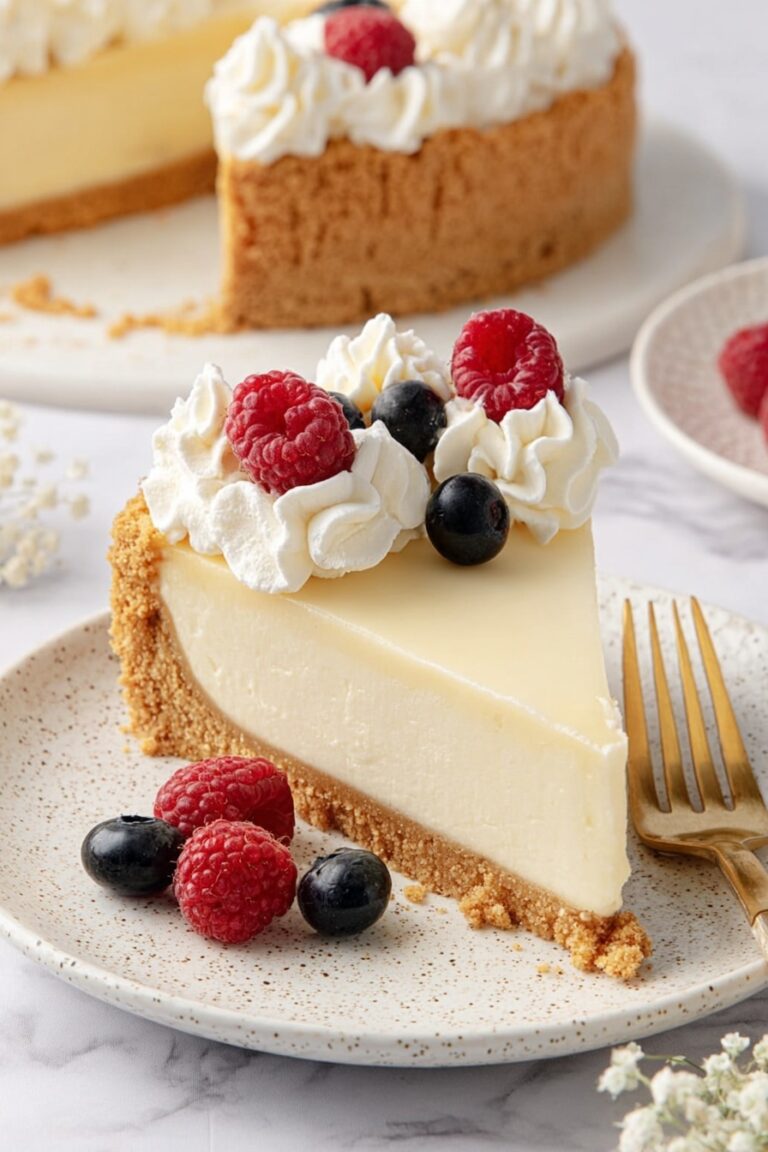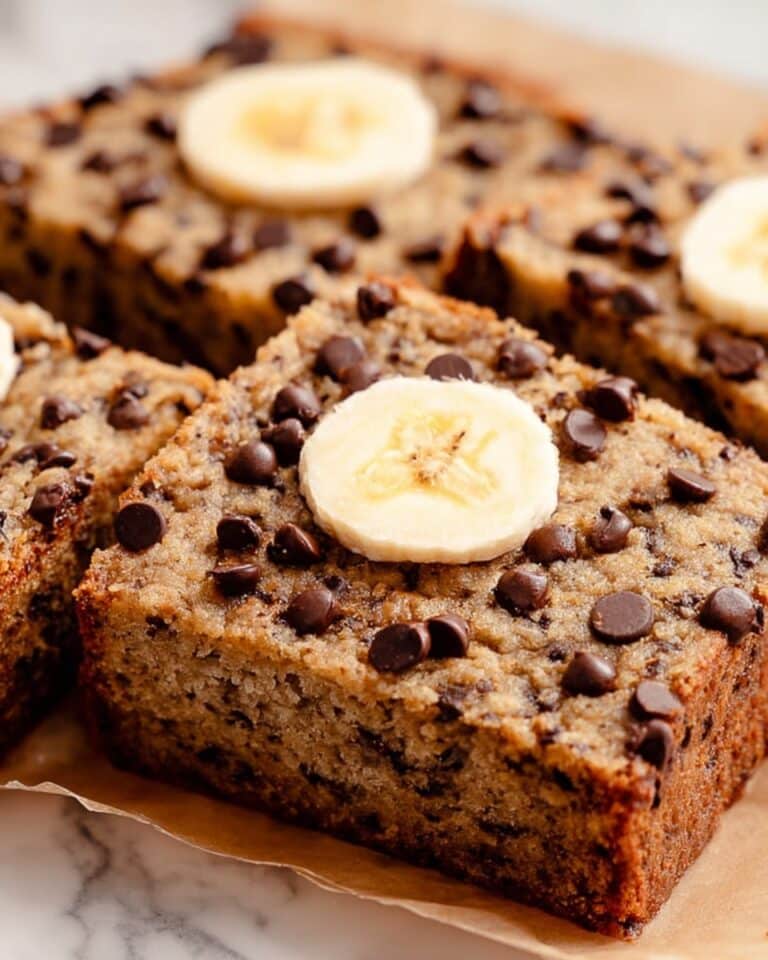Iced Oatmeal Cookies Recipe
I’m really excited to share this Iced Oatmeal Cookies Recipe with you because it’s one of those perfect blends of cozy and refreshing all at once. There’s something so comforting about the chewy oatmeal base paired with a delicately sweet glaze that just adds that pop of brightness. Whether you’re baking for an afternoon tea, a casual snack, or a weekend treat, these cookies never disappoint.
Over the years, I’ve found that this recipe strikes a wonderful balance—it’s simple enough for busy days but special enough to impress guests or just make your day a little sweeter. Plus, the iced glaze gives these oatmeal cookies a delightful twist, turning a classic favorite into something even more memorable. Trust me, once you try this Iced Oatmeal Cookies Recipe, you’ll want to make it again and again.
Why This Recipe Works
- Perfect Texture Balance: The rolled oats give chewiness while the lightly pulsed processing creates a tender crumb that’s not too dense.
- Simple Icing Boost: The powdered sugar glaze adds a sweet, glossy finish that keeps these cookies from ever feeling dry or plain.
- Easy-to-Find Ingredients: All pantry staples come together effortlessly, making this a go-to recipe for last-minute cravings.
- Flexible Preparation: You can chill the dough to control thickness or press the cookies flat before baking to customize the texture.
Ingredients & Why They Work
The ingredients in this Iced Oatmeal Cookies Recipe work harmoniously to give you that classic oatmeal taste with a smooth, sweet glaze that sets these cookies apart. Each component has a role, and making sure you choose quality basics will pay off big time.
- Rolled Oats: Pulsing them just a few times breaks them down slightly for tenderness but still keeps that hearty oatmeal bite.
- All-Purpose Flour: Provides structure while blending seamlessly with the oats and spices.
- Baking Soda: Gives just enough lift for a light crumb without puffing the cookies out of shape.
- Cinnamon & Nutmeg: Warm spices that bring a subtle depth often associated with traditional oatmeal cookies.
- Butter: Melted and cooled for smooth incorporation, it helps keep the cookies moist and tender.
- Brown Sugar & Granulated Sugar: A combo that balances moisture and sweetness while adding a touch of caramel flavor from the brown sugar.
- Egg: Acts as a binder to bring everything together nicely.
- Vanilla Extract: Enhances the natural flavors and adds a comforting aromatic note.
- Powdered Sugar (for glaze): Gives that classic sweet coating which dries to a shiny, slightly crisp finish.
- Milk: Thins the glaze so it’s easy to dip and spread without being runny.
- Light Corn Syrup (optional): Adds a beautiful sheen and prevents the glaze from crystallizing.
- Vanilla or Maple Extract (optional): Personalizes the glaze flavor for a subtle twist.
Tweak to Your Taste
I like to make this Iced Oatmeal Cookies Recipe my own by tweaking the glaze or adding mix-ins to the dough because it’s such a versatile base. It’s fun to experiment and see what you enjoy most without losing the cookie’s lovable texture.
- Variation: Adding raisins or dried cranberries is a longtime favorite of mine—it adds chewiness and a sweet punch that pairs wonderfully with the spices.
- Omit the Glaze: For a less sweet option, you can skip the icing and dust the cookies lightly with cinnamon sugar before baking.
- Gluten-Free: Swap the all-purpose flour for a gluten-free baking blend for a safe alternative—I’ve done this and the texture still comes out great.
- Spice it Up: Feel free to boost the cinnamon up to a full teaspoon or add a pinch of ground cloves for a deeper holiday vibe.
Step-by-Step: How I Make Iced Oatmeal Cookies Recipe
Step 1: Prepping the Oats and Dry Mix
Start by pulsing your rolled oats in a food processor about 4 to 5 times until they’re coarsely ground—not too fine, so you still get some texture. Then whisk the oats with the flour, baking soda, cinnamon, nutmeg, and salt in a big bowl. This little extra spice step always makes a difference and gives the cookies their nostalgic flavor.
Step 2: Mixing Wet Ingredients
In a separate bowl, whisk the melted, cooled butter with both sugars until smooth. Then stir in the beaten egg and vanilla extract. This part goes quick and ensures the sugars dissolve a bit, which helps the cookies stay moist and chewy.
Step 3: Combine and Chill
Pour the dry ingredients into the wet and fold gently with a wooden spoon just until combined—overmixing can toughen cookies, so stop when you don’t see flour anymore. If you have a little extra patience, chill the dough for 15 to 20 minutes; I find it makes cookies thicker and easier to handle.
Step 4: Shaping and Baking
Scoop about a tablespoon of dough for each cookie, roll it into a ball, and space them about 2 inches apart on parchment-lined baking sheets. If you want thinner cookies, just press the balls down lightly with your fingers before baking. Pop them into a 350°F oven for 10 to 12 minutes, watching for the edges to set and just start turning golden—this is your perfect doneness cue.
Step 5: Cool and Glaze
Once baked, let the cookies cool completely on a wire rack. While you wait, mix your glaze ingredients until silky smooth. Then dip the tops of each cookie and place them back on parchment with a cooling rack under it to catch drips. Give the glaze time to set at room temperature before stacking or storing.
Pro Tips for Making Iced Oatmeal Cookies Recipe
- Don’t Over-Pulse the Oats: Leaving some oat texture is key for that classic chewiness — it’s all about balance!
- Chill for Control: Chilling the dough isn’t mandatory, but it helps prevent cookies from spreading too thin as they bake.
- Cool Completely First: Always glaze only fully cooled cookies to ensure the icing sets properly without melting away.
- Use Parchment Paper: It guarantees easy cookie removal without breaking or sticking, saving you from baking mishaps.
How to Serve Iced Oatmeal Cookies Recipe
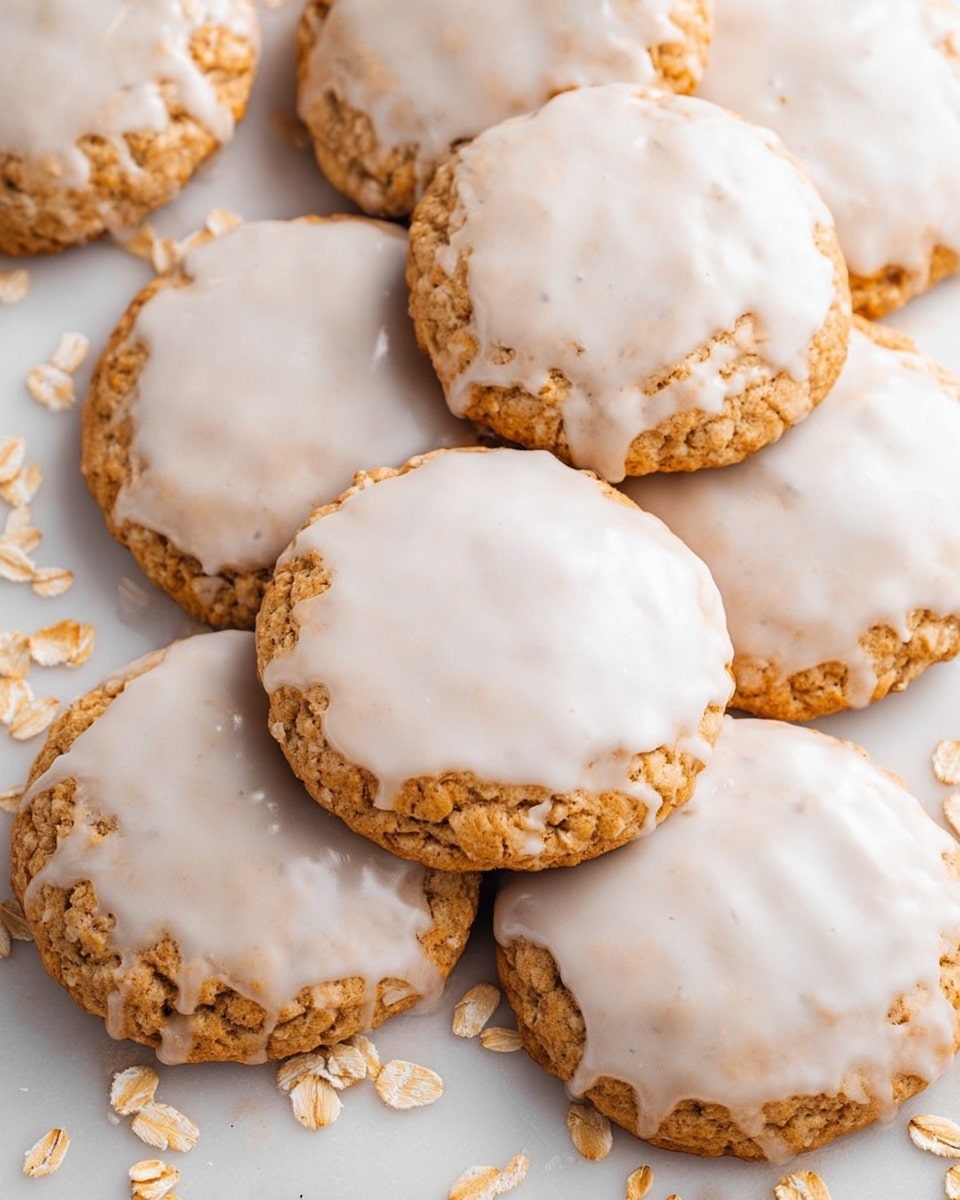
Garnishes
I usually keep the presentation simple because the glaze is the star, but if I’m feeling extra festive, a tiny sprinkle of cinnamon or finely chopped nuts on the icing adds a lovely touch. Sometimes, for a bit of crunch, I dust a pinch of coarse sugar before the glaze sets—small details that seem fancy but are super easy.
Side Dishes
These cookies pair beautifully with a steaming cup of chai tea or classic black coffee to balance the sweetness. For a casual brunch, I love them alongside fresh fruit and creamy yogurt—they make for a well-rounded, satisfying spread.
Creative Ways to Present
For a party, I arrange the iced oatmeal cookies in a circle on a pretty platter with a small bowl of extra glaze for dipping. Another favorite is stacking them with little parchment paper layers in between and tying the stack with a rustic string as a gift—it’s always a hit and looks charming.
Make Ahead and Storage
Storing Leftovers
I store leftover iced oatmeal cookies in an airtight container at room temperature, and they stay fresh for up to 4 days. If the glaze softens a bit, letting them sit uncovered for 10-15 minutes before serving helps bring that perfect crisp back.
Freezing
I’ve had good luck freezing both the baked cookies and the unbaked dough. For baked, wrap the cookies individually in plastic wrap and freeze in a sealed bag; thaw at room temp. For dough, scoop and freeze on a tray, then transfer to a bag for quick baking whenever the craving hits.
Reheating
To refresh leftover cookies, I pop them into a 300°F oven for 5 minutes just to warm through and slightly crisp the edges again. This little step works wonders, especially if the cookies have softened in storage.
FAQs
-
Can I use quick oats instead of rolled oats in this recipe?
Quick oats can be used, but the texture will be softer and less chewy because they are thinner and more finely cut. If you want to keep some chewiness, I recommend sticking with rolled oats pulsed lightly—it gives a better bite.
-
Is it necessary to glaze the cookies, or can they be served plain?
The glaze adds a lovely sweet finish and a bit of moisture, but you can definitely serve the cookies plain if you prefer less sweetness or want a more rustic look. A simple dusting of powdered sugar also works as a lighter alternative.
-
How thick should I roll or scoop the dough for these cookies?
I recommend scooping about a tablespoon per cookie for even baking, spacing them 2 inches apart. You can press them down slightly for thinner cookies or leave them as balls for a thicker, softer center—both ways turn out delicious.
-
Can I make these cookies vegan?
Yes! To make this Iced Oatmeal Cookies Recipe vegan, use a vegan butter substitute and replace the egg with a flax or chia egg (1 tbsp ground flaxseed or chia seeds mixed with 3 tbsp water). The glaze can be adapted by using plant-based milk and skipping the corn syrup or finding a vegan alternative.
Final Thoughts
This Iced Oatmeal Cookies Recipe holds a special place in my kitchen because of its comforting flavors with a delicate twist. It’s simple, approachable, and delivers consistent deliciousness every time, which for me is the hallmark of a true favorite. I hope you’ll bake these yourself soon—you might just find that perfect cookie you’ve been searching for, one cozy bite at a time.
Print
Iced Oatmeal Cookies Recipe
- Prep Time: 15 minutes
- Cook Time: 12 minutes
- Total Time: 27 minutes
- Yield: 18 cookies
- Category: Dessert
- Method: Baking
- Cuisine: American
- Diet: Vegetarian
Description
Delicious and chewy iced oatmeal cookies with a spiced oat base, topped with a sweet glaze for added flavor and shine. Perfect for a comforting treat or sharing with friends and family.
Ingredients
Cookie Dough
- 1 cup rolled oats lightly pulsed in a food processor
- 1 cup all-purpose flour
- 1/2 teaspoon baking soda
- 1/2 teaspoon cinnamon
- 1/4 teaspoon nutmeg
- 1/2 teaspoon salt
- 1/2 cup unsalted butter melted and cooled
- 1/2 cup brown sugar
- 1/4 cup granulated sugar
- 1 large egg beaten
- 1 teaspoon vanilla extract
Glaze
- 1 cup powdered sugar
- 2-3 tablespoons milk
- 1 teaspoon light corn syrup (optional)
- 1/4 teaspoon vanilla or maple extract (optional)
Instructions
- Preheat Oven: Preheat your oven to 350°F and line baking sheets with parchment paper to prevent sticking and ensure even baking.
- Prepare Oats: Pulse the rolled oats in a food processor 4–5 times until they are coarsely ground, creating a nice texture for the cookies.
- Mix Dry Ingredients: In a large bowl, whisk together the pulsed oats, all-purpose flour, baking soda, cinnamon, nutmeg, and salt until well combined.
- Cream Butter and Sugars: In a separate bowl, whisk the melted and cooled unsalted butter with the brown sugar and granulated sugar until smooth. Then stir in the beaten egg and vanilla extract.
- Combine Dough: Gradually mix the dry ingredients into the wet ingredients using a wooden spoon until just combined. Avoid overmixing to keep cookies tender.
- Optional Dough Chill: For thicker cookies, chill the dough in the refrigerator for 15–20 minutes before baking.
- Shape Cookies: Scoop approximately 1 tablespoon of dough per cookie, roll into balls, and place them 2 inches apart on the prepared baking sheets. For flatter cookies, gently press the dough balls down with your fingers.
- Bake Cookies: Bake in the preheated oven for 12 minutes or until the edges are set and the tops and edges turn slightly golden brown.
- Cool Cookies: Transfer the baked cookies to a wire rack and let cool completely before glazing.
- Prepare Glaze: In a bowl, mix the powdered sugar with 3 tablespoons of milk until smooth. Add light corn syrup and vanilla or maple extract if using for a shiny finish and extra flavor.
- Glaze Cookies: Dip the tops of the cooled cookies into the glaze, then place them on a parchment-lined baking sheet with a wire rack on top to allow excess glaze to drip off. Let the icing set completely before stacking or serving.
Notes
- You can substitute half of the all-purpose flour with whole wheat flour for a nuttier flavor and added fiber.
- For vegan cookies, replace the butter with coconut oil and the egg with a flax egg.
- If you prefer a thinner glaze, add a bit more milk; for a thicker glaze, reduce the milk slightly.
- Make sure the butter is cooled after melting to avoid cooking the egg when mixing.
- Chilling the dough is optional but recommended for thicker, chewier cookies.
Nutrition
- Serving Size: 1 cookie
- Calories: 150 kcal
- Sugar: 12 g
- Sodium: 120 mg
- Fat: 7 g
- Saturated Fat: 4 g
- Unsaturated Fat: 3 g
- Trans Fat: 0 g
- Carbohydrates: 21 g
- Fiber: 2 g
- Protein: 2 g
- Cholesterol: 30 mg

